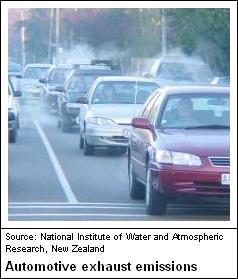AP 42 Air Pollutant Emission Factors
Volume II is no longer maintained as such, but roadway air dispersion models for estimating emissions from onroad and offroad vehicles as well as from other mobile equipment are available online at the EPA's website.
In routine common usage, Volume I of the emission factor compilation is very often referred to as simply "AP 42". Print copies of AP 42 are no longer available.
Contents
Introduction and Definitions
Air pollutant emission factors are representative values that attempt to relate the quantity of a pollutant released to the ambient air with an activity associated with the release of that pollutant. These factors are usually expressed as the weight of pollutant divided by a unit weight, volume, distance, or duration of the activity emitting the pollutant (e.g., kilograms of particulate emitted per megagram of coal burned). Such factors facilitate estimation of emissions from various sources of air pollution. In most cases, these factors are simply averages of all available data of acceptable quality, and are generally assumed to be representative of long-term averages.The equation for the estimation of emissions before emission reduction controls are applied is:
E = A × EF
and for emissions after reduction controls are applied:
E = A × EF × (1 – ER/100)
where:
E = emissions, in units of pollutant per unit of time
A = activity rate, in units of weight, volume, distance or duration per unit of time
EF = emission factor, in units of pollutant per unit of weight, volume, distance or duration
ER = overall emission reduction efficiency, in %
Emission factors are used by atmospheric dispersion modelers and others to determine the amount of air pollutants being emitted from sources within industrial facilities.
Chapters in AP 42, Volume I, Fifth Edition
|
Chapter 1: External Combustion Sources (AP 42 Air Pollutant Emission Factors) |
Chapter 11: Mineral Products Industry (AP 42 Air Pollutant Emission Factors) |
Chapter 5, Section 5.1 "Petroleum Refining" discusses the air pollutant emissions from the various types of equipment used in the petroleum crude oil refineries as well as from their auxiliary steam-generating boilers, furnaces and engines, and Table 5.1.1 lists the pertinent emission factors. Table 5.1.2 lists the emission factors for the fugitive air pollutant emissions from the large wet cooling towers in refineries and from the oil/water separators used in treating refinery wastewater.
The fugitive air pollutant emission factors from over-pressure relief valves, piping, open-ended piping lines or drains, piping flanges, sample connections, and mechanical seals on pump and compressor shafts are also discussed and listed in Chapter 5.
In most cases, the emission factors in Chapter 5 are included for both uncontrolled conditions before emission reduction controls are implemented and controlled conditions after the specified emission reduction methods are implemented.
Chapter 7 "Liquid Storage Tanks" is devoted to the methodology for calculating the emissions losses from the six basic tank designs used for organic liquid storage: fixed roof (vertical and horizontal), external floating roof, domed external (or covered) floating roof, internal floating roof, variable vapor space, and pressure (low and high). The methodology in Chapter 7 was developed by the American Petroleum Institute (API) in collaboration with the EPA.
The EPA has developed a software program named "TANKS" which performs the Chapter 7 methodology for calculating emission losses from storage tanks. The program's installation file, along with a user manual and the source code, are available online at the EPA's website.
Chapters 5 and 7 discussed above are illustrative of the type of information contained in the other chapters of AP 42. It should also be noted that many of the fugitive emission factors in Chapter 5 and the emissions calculation methodology in Chapter 7 and the TANKS program also apply to many of the other industrial categories in AP-42 besides the petroleum industry.
Other sources of emission factors
General emission factors
- United Kingdom's emission factor database.
- 2005 Emission Inventory Guidebook (Developed and published by the European Environment Agency)
- Australian Emissions Estimation Technique Manuals.
- Fugitive emissions leaks from ethylene and other chemical plants.
Greenhouse gas emission factors
- Revised 1996 IPCC Guidelines for National Greenhouse Gas Inventories .
- Greenhouse Gas Emissions Indicator Data Sources and Methods.
- Sangea - American Petroleum Institute Greenhouse Gas Emission Estimation Methodologies.

